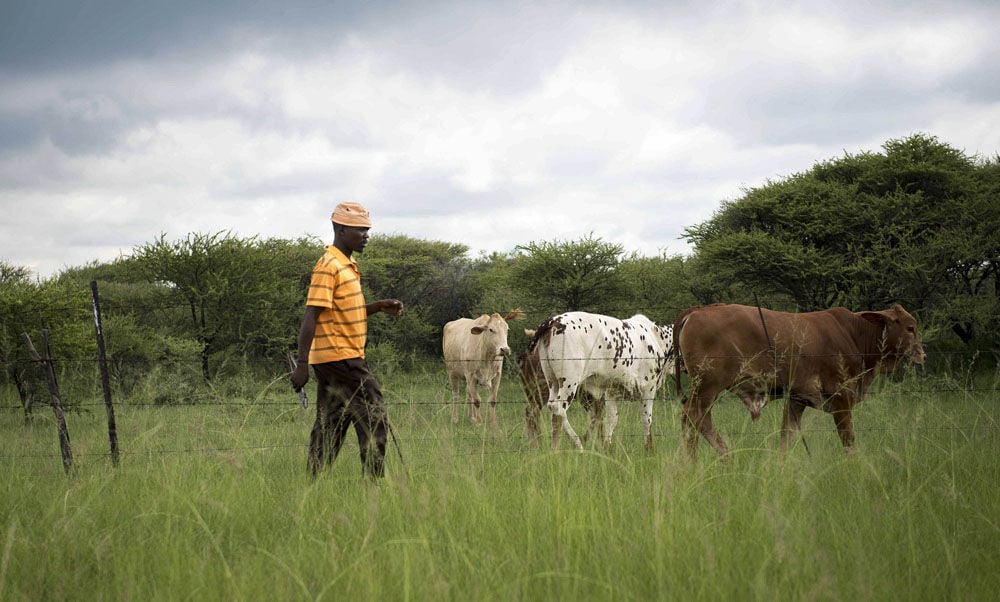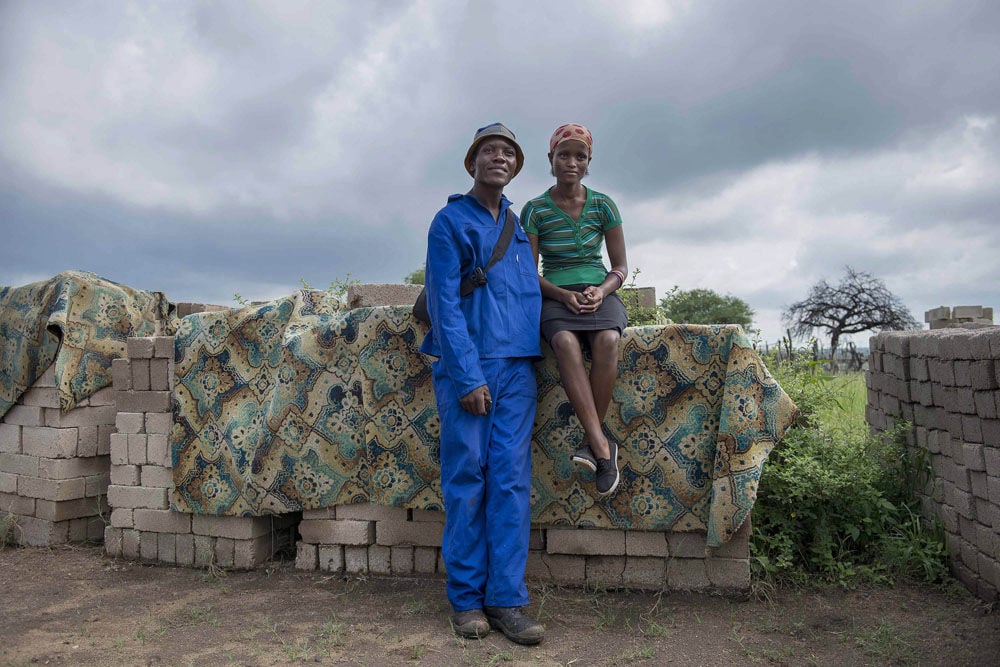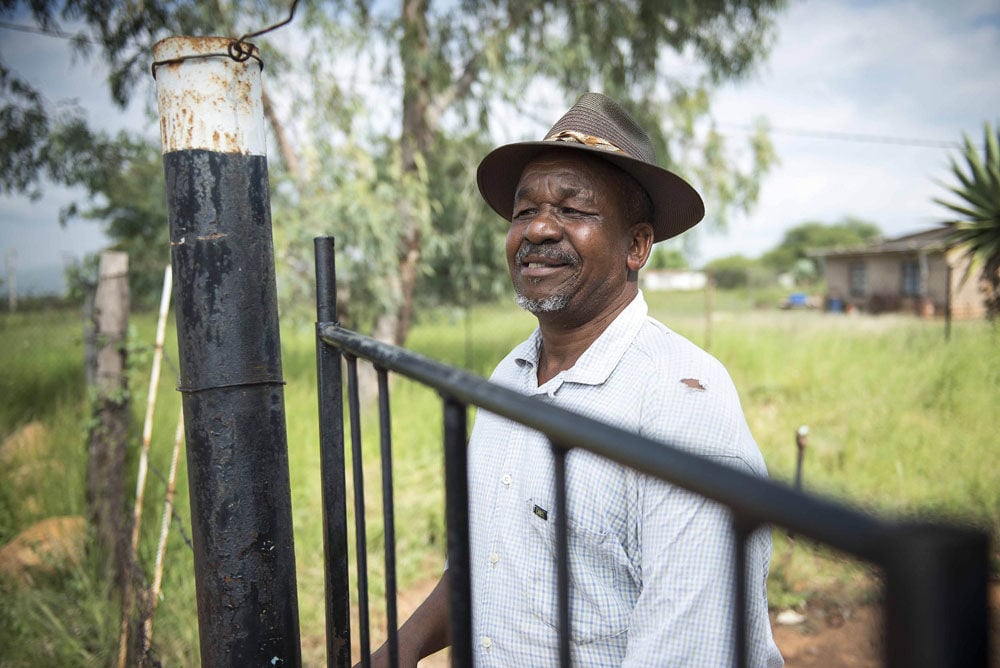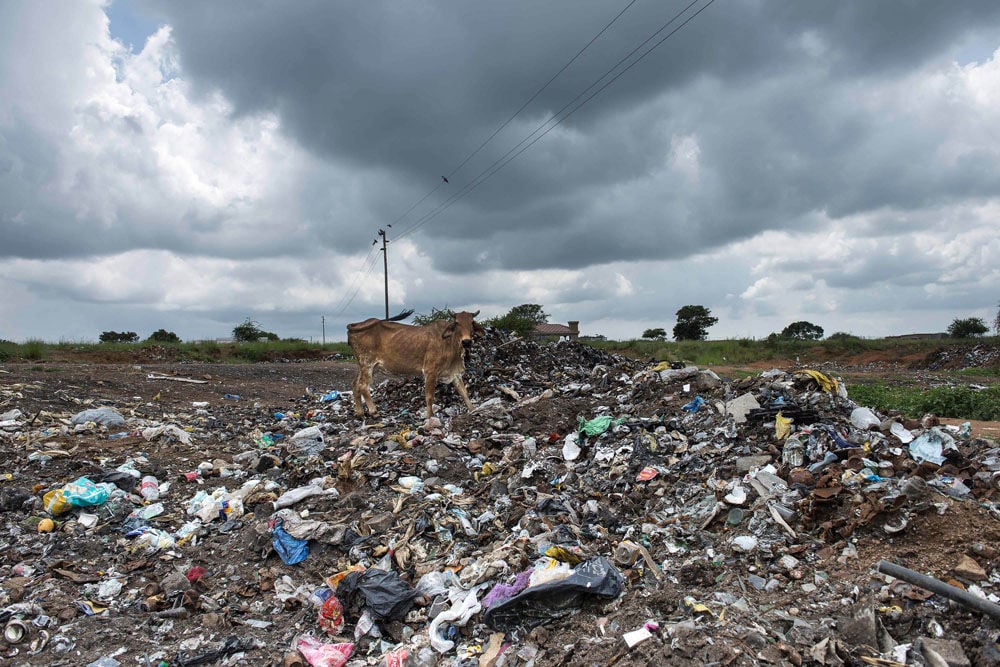Sandfontein lies 60km from Rustenburg.
It is a sweltering day and weather-beaten herder Blackie Ramoroki walks listlessly behind his cattle, shouting “bloody fool” and flailing his arms as he drives them into the kraal he has built a stone’s throw from his house.
His lone voice is all that can be heard in the sleepy village of Sandfontein in the North West – other than the chirping of birds in the thorn trees beside the Mogwase River where he takes his livestock to drink.
This is the same river where, as a young boy, I would go with other kids – against our parents’ advice – to dive into the calm but dirty water on burning days.
The town used to be called Mogwase, derived from the Setswana verb gwasa, which refers to the whooshing sound of the water. Villagers speculate that the name Sandfontein came from the sandbanks that form after heavy rain.
A nearby shopping centre is now called Mogwase, where, with shops, there is a police station, home affairs office and the magistrate’s court.
Narrow paths
On their way to the river, villagers pass Ramoroki’s yard and their constant trampling of the grass has created two narrow paths with tall weeds growing between them.
Like many other villagers’ yards, Ramoroki’s is at least four times bigger than ones found in Soweto and he uses a large part of it to grow mealies. Some villagers, especially the elders, still practise subsistence farming. Young people, on the other hand, seem uninterested in agriculture.
The village is 60km from Rustenburg, northeast of the Pilanesberg National Park, and is one of 108 under the jurisdiction of the municipality named after the former South African Communist Party general secretary and ANC treasurer, Moses Kotane. According to Statistics South Africa, the village was home to 6 548 in 2011. It had only eight people when it was established in the 1920s. Then the place attracted farmers seeking pasture for their animals.

Blackie Ramoroki herds cattle to supplement his income.
Nobody seems to know what was behind Sandfontein’s name change but some say it was given, as happened typically during apartheid, to the settlement without the consent of its inhabitants.
The tranquility of the place is punctuated by noisy buses and taxis taking mineworkers to the Rustenburg and Northam platinum mines.
Sedentary lifestyle
Later in the morning, when the buses and taxis have left, children prepare to leave for school. Herders take their livestock for grazing on the nearby veld and the unemployed villagers either take naps or gather under trees to chat about their frustrations – about the government’s lacklustre service delivery and poverty in general.
Here in Sandfontein, villagers are not in a rush for anything. Whatever they can’t do today can always wait until tomorrow, and this is the type of life I became accustomed to for almost 26 years.
On its website, the department of rural development and land reform outlines one of its programmes as aiming “to create vibrant, equitable and sustainable rural communities through strategic investments in ICT [information communications technology], and social and economic infrastructure. This enables rural communities to address basic human needs while engaging in economic activities”.

Obert Mogwera and Maria Mabitsela pose with piles of bricks that speak of unfulfilled housing promises.
For the past 20 years, I have witnessed some changes being brought to my village, such as a tarred main road replacing what used to be a bumpy dirt road. There are only a few RDP houses and, in some yards, the municipality has only distributed bricks, now lying in piles waiting to be used.
The employment of most young people on the mines has helped to raise the socioeconomic condition of the village and many shacks and mud houses have been demolished and replaced with large, tile-roofed houses. But the majority of people are still living in abject poverty and the village is plagued by other social problems, such as HIV, unemployment, teenage pregnancy and drug use.
Water and lights
Almost all the houses are electrified, with the exception of recently allocated new stands. A year ago, the municipality installed tall mast lights, which are not yet working.
The Mogwase River passes through the village but the locals have experienced water shortages for years. There are a few taps in the village, which intermittently run dry, forcing the residents to buy water from those with boreholes and JoJo (rainwater) tanks.
A young person, who does not want to give his name, says their long-standing concerns about the water supply have been raised without success with the municipality.
“It is not like we don’t want to take to the streets – we can protest if we want – but we won’t do it because we don’t like violence,” he says.
Ramoroki owns a 2 500-litre tank in which he stores water for the household and his cattle, in the event of a water shortage. A pensioner, Ramoroki says what he earns for looking after a villager’s cattle supplements his monthly old-age pension.
ANC gripes
Speaking to me while retightening the barbed-wire fence of his kraal, he praises the late Nelson Mandela for putting up a fight against apartheid. But he has gripes too.
“When we went to vote in 1994, we were told that we would be built houses. But some of us are still waiting for those houses; the other people in the village died without having seen those houses built.
“What also makes me unhappy about the government is that more rights have been granted to our children. As a parent today, I am scared to scold my own child, because I am afraid he might go and report me to the police for abuse,” he says, looking dejected and yanking at the wire with a pair of pliers.

Rammala Modisane’s family goes back to the original settlement.
He used to share a four-roomed house with his four children but, since the birth of grandchildren, it is too small. He has since built two rooms apart from the main house – after a long wait for the government to build him a low-cost house.
President Jacob Zuma said in his State of the Nation address recently that about three million low-cost houses have been built for the needy, but Ramoroki, like many others, probably still has a long wait ahead.
Thirsty work
While we are speaking, another herder passes by. He greets us and complains about the heat.
Ramoroki says that the herder is from Lesotho and, unlike him, was demanding to be paid R1 000 a month, which, he says, is way too much money.
Ramoroki always keeps a watchful eye on his cattle because of the high incidence of theft. It is rife in the village, he says. “Cattle are just taken.”
He says he and other villagers caught a man, who was out on parole for robbery, while he was “accompanying” some cattle to Northam. He was handed over to the police, charged and found guilty of cattle theft.
I knock on the door of Rammala Modisane’s house, who was about to take a nap after taking his medication for diabetes. Although it is the first time we have met, he says he knows my younger brother, who sometimes helps him to type up information he has collected about the history of the Bakgatla tribe.
He has been fighting a losing battle to convince the tribal authority that he is the rightful heir to the chieftainship by virtue of the fact that his father was one of the first eight people to live in the village.
Historic comparisons
We sit under a mango tree planted right up against his three-roomed house. He begins to talk, comparing life under apartheid with the current democratic dispensation. He comes down hard on politicians such as Cyril Ramaphosa and Tokyo Sexwale, accusing them of having turned their backs on the poor by having shareholdings in the mines.
Singling out Ramaphosa, he says: “In the 1980s, Cyril used to be vocal about the question of salary disparity in the mines while he was still a trade unionist. Now, after he has acquired some shares in Lonmin, he does not stand for the rights of the poor.”

The semi-rural village of Sandfontein, where access to clean water is a problem, is home to several thousand people, many of whom work on the mines.
He also throws a broadside at Zuma’s son, Khulubuse, accusing him of having exploited the mineworkers at the defunct Aurora mine.
He says “capitalism and corruption” are the biggest problems threatening the future of this country.
Like many other elderly villagers, Modisane worked as a drill operator on the mines. “Using the drill machine is a hard thing to do and it is too hot underground.”
He believes that the miners deserve a better life, although he won’t say how much he thinks they should take home every month.
‘Dependency syndrome’
But he criticises government policy for creating a “dependency syndrome”, singling out the building of the RDP houses for the destitute.
“In my opinion, the government should have taken the money used to erect the RDP houses and invested it in revitalising the economy, in the factories that were closed,” he says, referring to the empty factories nearby. The owners moved to Johannesburg after the demise of apartheid.
He pauses, stands and goes inside to drink water.
When he returns, he takes a crumpled newspaper scrap from his pocket and carefully rolls himself a ci garette with Boxer tobacco. He lights up and inhales contentedly.
He praises the quality of infrastructure under the apartheid regime.
“I thought we were the only ones worried by the poor quality of infrastructure here in Sandfontein until I visited Bramfischerville where the people in Alexandra were relocated from the Jukskei River. There, the newly constructed roads were already developing potholes.
I tease a schoolgirl walking past in a uniform, calling her a born-free. Hitting back, she mocks me, called me a “BBT” – “You were born before technology, that’s what it means.”
I later find out that she is keen to vote because “the ANC government has been giving me a monthly social grant”.